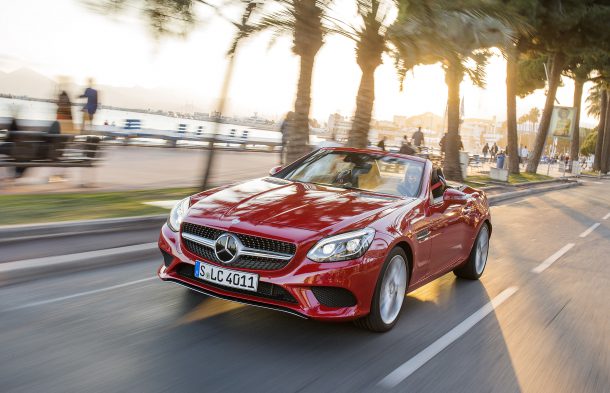Mercedes-Benz's Massive Family Could Lose Some Members

Mercedes-Benz isn’t exempt from the normal ebb and flow of product lines, but no one would claim that the German automaker doesn’t have a crowded house. Coupe-ified versions of its utility vehicles proliferated in recent years, as have AMG variants of existing models.
This is an automaker with three roadsters. Coupes and convertibles spring from everywhere at once.
As Mercedes-Benz prepares to transition oversight of the company away from longtime CEO Dr. Dieter Zetsche, his chosen successor, Ola Källenius, admits the product family might require some paring.
Speaking to Top Gear at the Paris auto show, the current R&D chief said model elimination would be done with a scalpel, not a chainsaw.
“We have had about 20 years of almost uninterrupted broadening of the portfolio, especially on the SUV side, if you look at how successful that has been over the years,” Källenius said.
“[Between] 2020-2022 this will take us to well above 40 models. And even if we love every one of our ‘children’, and we do, we must be very rational. We must not hesitate to slim down as well.”
Mercedes-Benz has shown it can part with some of its children. The automaker culled the ridiculous, V12-powered Mercedes-AMG G 65 ahead of the arrival of the next-gen G-Class, and last year it announced the elimination of America’s B-Class Electric Drive. That model’s gas-powered Canadian sibling disappears after 2019, even though an updated replacement looms in Europe.
Källenius was quick to reassure fans of niche models that product changes will not be sweeping, not will they be immediate. The Swede replaces Dr. Z in the CEO’s chair next May.
“I do not think we’re looking at any radical trimming of the tree here,” he said. “But, over the next ten years, we’ll look at the portfolio, look at what makes sense and cater it to where the market is going.”
In the U.S., you can rest assured that utility vehicles stand the best chance of avoiding the chopping block. The compact GLC remains the brand’s best-seller, with volume up 53.8 percent, year to date. Low-volume models like the SLC and SL roadsters continue to see their popularity decline, with the smaller two-seater sinking 31.2 percent over the first nine months of the year. Its SL big brother fell 24.4 percent over the same period.
Overall, Mercedes’ standing in the U.S. slipped this year, with year-to-date sales down 5.8 percent.
[Image: Daimler AG]

More by Steph Willems
Latest Car Reviews
Read moreLatest Product Reviews
Read moreRecent Comments
- EBFlex It will have exactly zero effect
- THX1136 What happened to the other companies that were going to build charging stations? Maybe I'm not remembering clearly OR maybe the money the government gave them hasn't been applied to building some at this point. Sincere question/no snark.
- VoGhost ChatGPT, Review the following article from Automotive News: and create an 800 word essay summarizing the content. Then re-write the essay from the perspective of an ExxonMobil public relations executive looking to encourage the use of petroleum. Ensure the essay has biases that reinforce the views of my audience of elderly white Trump-loving Americans with minimal education. Then write a headline for the essay that will anger this audience and encourage them to read the article and add their own thoughts in the comments. Then use the publish routine to publish the essay under “news blog” using Matt Posky listing the author to completely subvert the purpose of The Truth About Cars.
- VoGhost Your source is a Posky editorial? Yikes.
- Fed65767768 Nice find. Had one in the early-80s; loved it but rust got to it big time.Still can't wrap my head around $22.5K for this with 106,000 km and sundry issues.Reluctant (but easy) CP.


































Comments
Join the conversation
If they still make SLKs I will gladly take one of the surplus off their hands. I won't even charge them any money. In a nice blue, please.
In addition to Mercedes-Benz, I feel that both BMW and Audi have unusually large lineups.